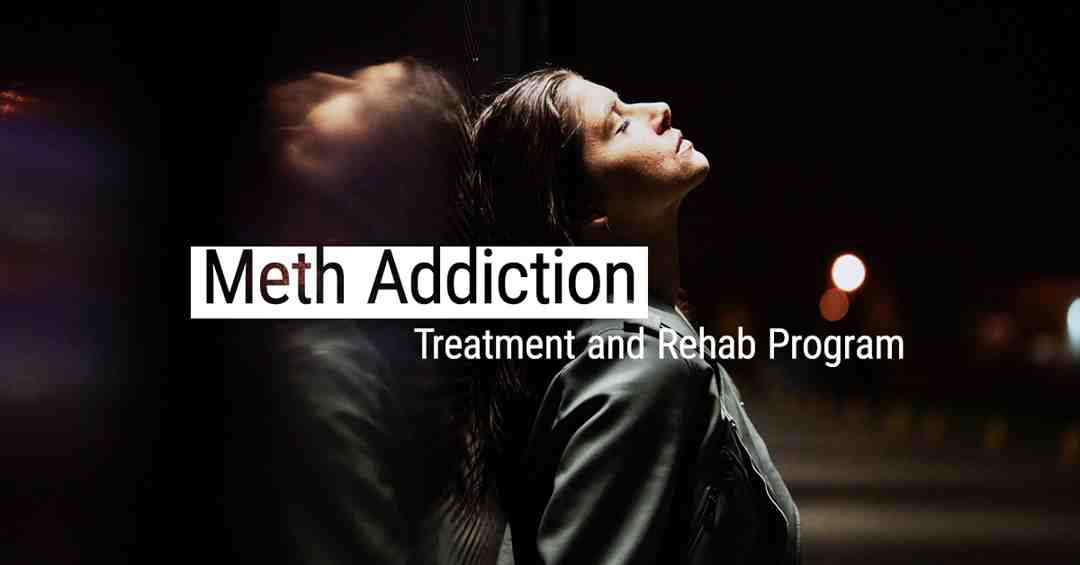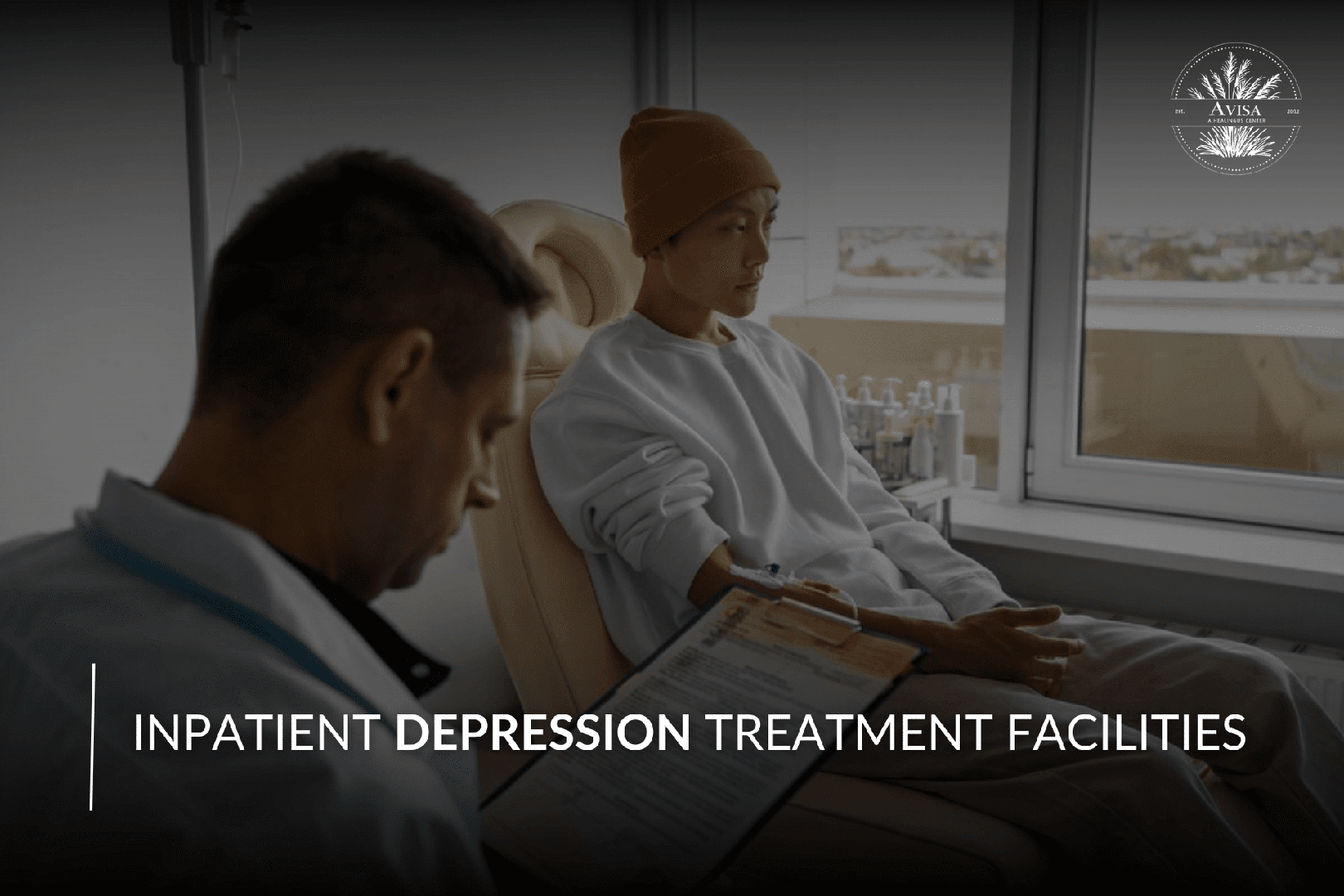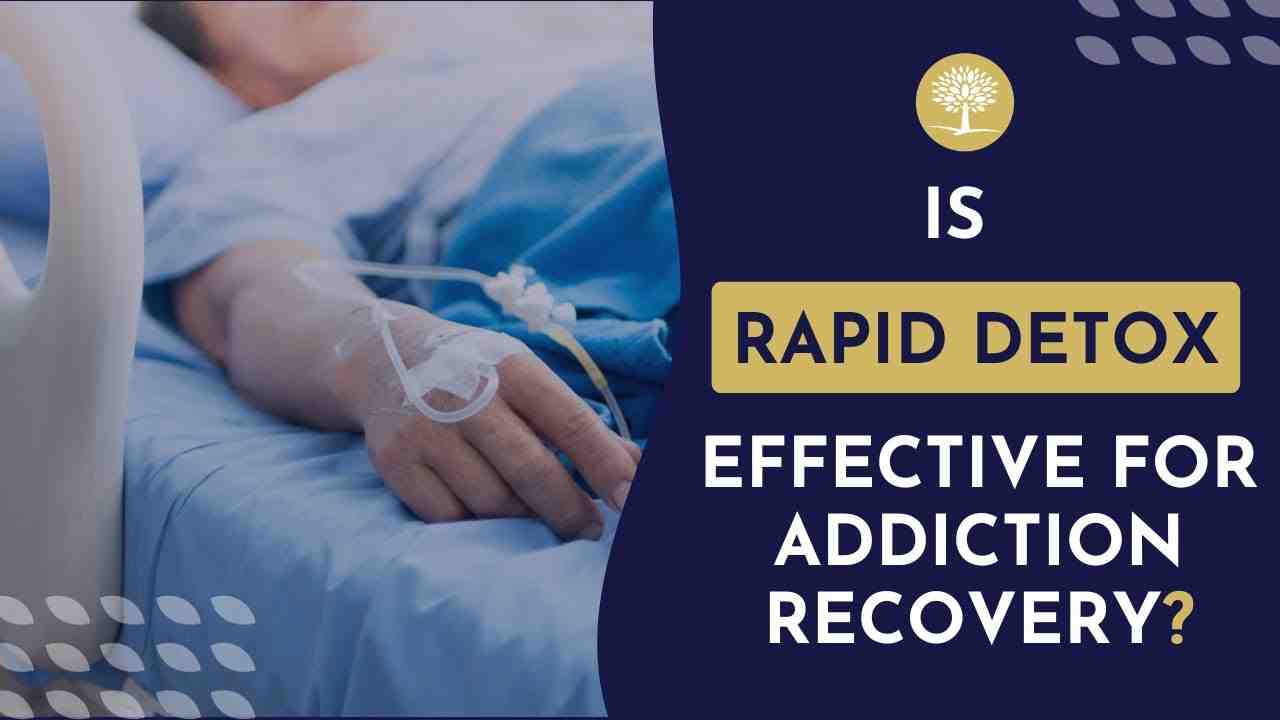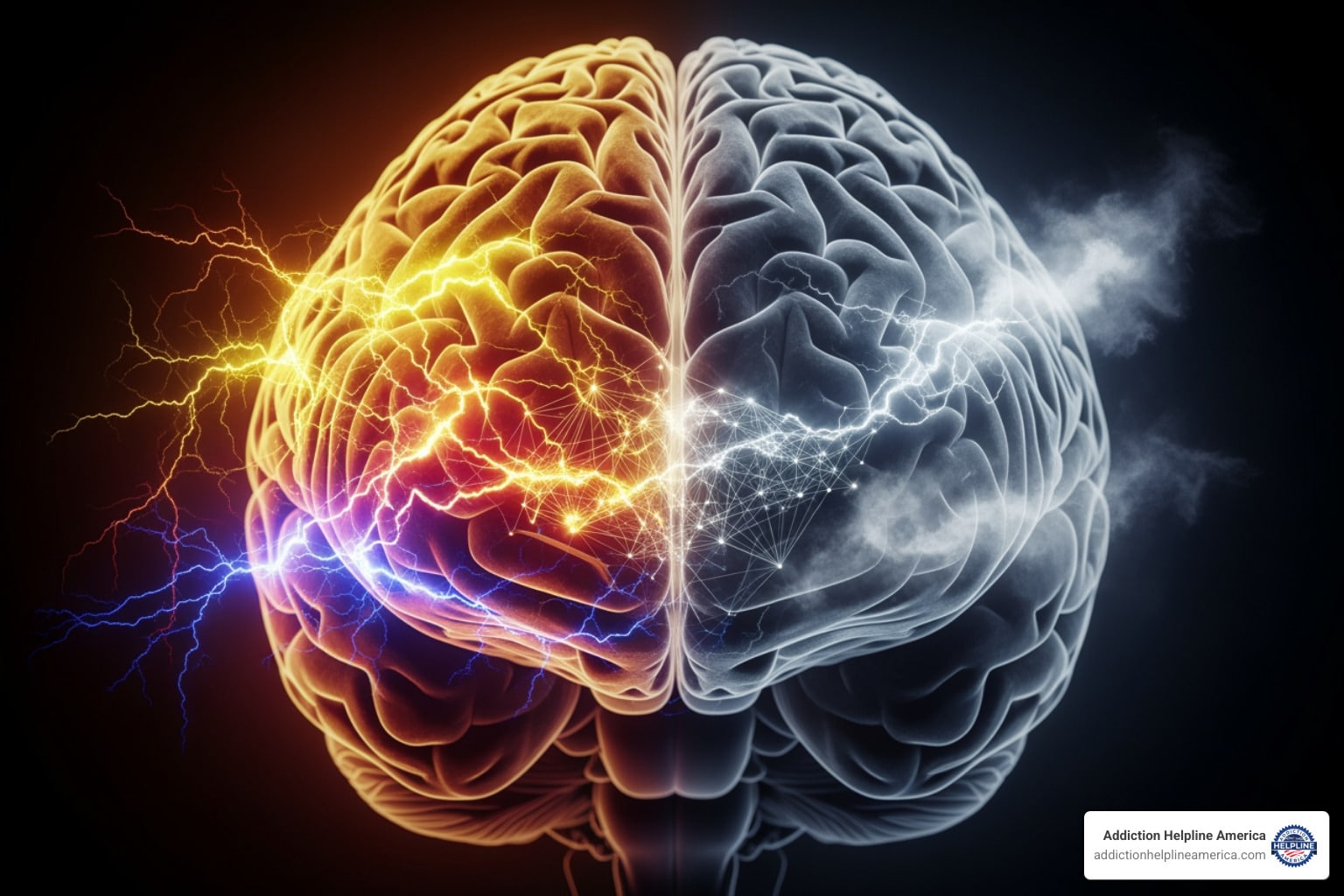
Understanding the Complexities of Treating Bipolar Depression
Bipolar disorder antidepressants are among the most controversial medications in psychiatry, with research showing they may be “experimental” for treating bipolar depression—meaning none have been proven more effective than a placebo in bipolar I disorder. Despite this, approximately 34% of people with bipolar disorder are prescribed antidepressants, often in combination with other medications. The core concern is that antidepressants, when used alone, can trigger dangerous mood switches into mania or hypomania, worsen rapid cycling, and may not provide additional benefit when combined with mood stabilizers.
Key Facts About Antidepressants for Bipolar Disorder:
- Primary Risk: Can induce mania, hypomania, or mixed episodes (Treatment-Emergent Affective Switch or TEAS) within 8 weeks of starting treatment
- Effectiveness Concern: Studies show insufficient proof that antidepressants work better than placebo for bipolar I depression
- Current Guidelines: Should only be used short-term and always combined with a mood stabilizer or antipsychotic—never as monotherapy
- Safer for Bipolar II: May be more appropriate for short-term use in bipolar II disorder than bipolar I
- First-Line Treatment: Mood stabilizers (like lithium) and atypical antipsychotics are the cornerstone of bipolar treatment, not antidepressants
The challenge lies in the fact that bipolar depression is responsible for most of the disease burden in bipolar disorder, yet the safest and most effective treatment approaches remain unclear. Unlike unipolar depression, where antidepressants are a proven first-line treatment, bipolar depression requires a fundamentally different approach focused on mood stabilization rather than simply lifting depression.
At Addiction Helpline America, we understand the complex intersection of mental health conditions and substance use, particularly when individuals with bipolar disorder may turn to drugs or alcohol to self-medicate their symptoms. Our team has extensive experience guiding families through the process of finding comprehensive treatment programs that address both bipolar disorder antidepressants management and co-occurring substance use disorders with evidence-based, integrated care.
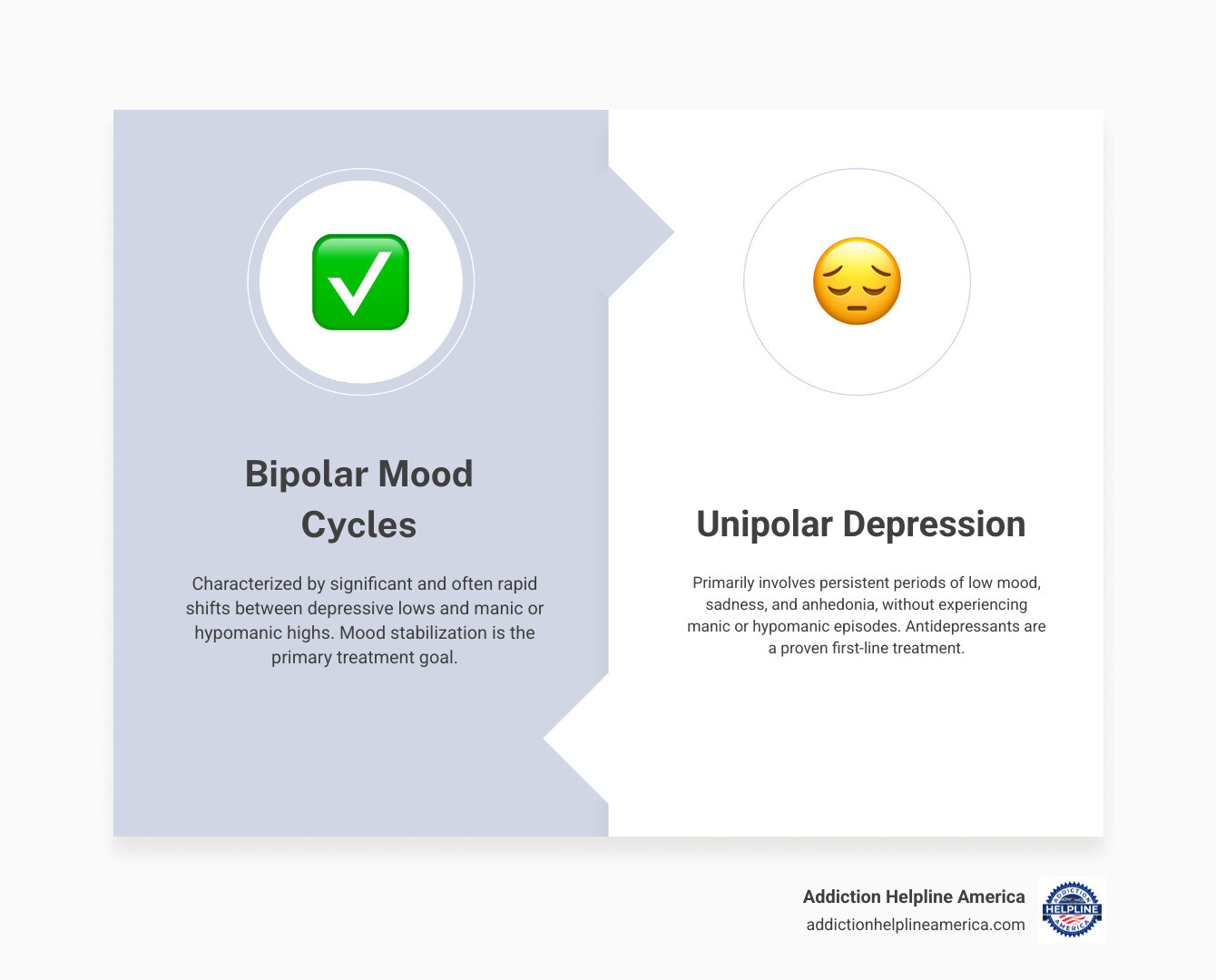
Bipolar disorder antidepressants word roundup:
Understanding Bipolar Disorder and Its Treatment Challenges
Living with bipolar disorder means experiencing mood swings that go far beyond the normal ups and downs of everyday life. This complex mental health condition brings extreme shifts in mood, energy, and activity levels that can last for days, weeks, or even months at a time. These aren’t just “bad days” or “good days”—they’re intense episodes that can make it incredibly difficult to maintain relationships, hold down a job, or simply get through daily routines.
What makes bipolar disorder unique is its two distinct poles: periods of intense elevation and periods of profound depression. During manic episodes, a person might feel invincible, need very little sleep, talk rapidly, have racing thoughts, and engage in risky behaviors like spending sprees or dangerous activities. Their mood is abnormally liftd or irritable, and their self-esteem can become inflated to unrealistic levels.
Hypomanic episodes are like manic episodes’ quieter cousin—similar symptoms but less intense. The person might feel unusually energetic and productive, but they can still function in their daily life. There’s no psychosis involved, and while friends and family might notice something’s different, it doesn’t cause the severe disruption that full mania does.
Then there are depressive episodes, which bring crushing sadness, loss of interest in things that once brought joy, exhaustion, feelings of worthlessness, changes in sleep and appetite, difficulty concentrating, and sometimes thoughts of self-harm. These depressive periods are what cause most of the suffering in bipolar disorder, which is why the question of bipolar disorder antidepressants becomes so important—and so complicated.
Here’s where things get tricky: bipolar disorder is fundamentally different from unipolar depression (what most people simply call “depression”). The critical difference? People with unipolar depression only experience depressive episodes—they never have the liftd mood states. This distinction isn’t just academic—it’s absolutely crucial for treatment. Using antidepressants to treat bipolar depression the same way you’d treat unipolar depression can actually make things worse, triggering dangerous mood switches into mania or hypomania.

The Types of Bipolar Disorder
Not all bipolar disorder looks the same. The DSM-5 (the diagnostic manual psychiatrists use) breaks it down into different types, and understanding which type you have makes all the difference when it comes to treatment—especially when considering bipolar disorder antidepressants.
Bipolar I disorder is defined by at least one full manic episode. These manic episodes are often severe enough to require hospitalization, and they can include psychotic features like delusions or hallucinations. Most people with Bipolar I also experience depressive episodes, but it’s that intense mania that sets this type apart.
Bipolar II disorder involves at least one major depressive episode and at least one hypomanic episode, but never a full manic episode. Because the “highs” are less dramatic and the depressive episodes more prominent, Bipolar II is frequently misdiagnosed as regular depression. This misdiagnosis can lead to people being prescribed antidepressants alone—exactly the treatment approach that carries the most risk for triggering mood instability.
Cyclothymic disorder (or cyclothymia) is a milder but chronic form where someone experiences numerous periods of hypomanic and depressive symptoms over at least two years. The symptoms never reach the full intensity of manic or major depressive episodes, but the constant cycling between highs and lows still significantly impacts quality of life.
Getting the right diagnosis isn’t just important—it’s essential. The risks and benefits of using antidepressants vary dramatically depending on which type of bipolar disorder you have. For instance, antidepressants may be somewhat safer for short-term use in Bipolar II than in Bipolar I, though caution is still warranted. You can explore more detailed clinical definitions in this scientific research on DSM-5 definitions.
At Addiction Helpline America, we’ve seen how crucial accurate diagnosis is, especially when substance use enters the picture. Many people with undiagnosed or misdiagnosed bipolar disorder turn to drugs or alcohol to manage their extreme mood swings, creating a complex situation that requires specialized, integrated treatment addressing both conditions simultaneously.
The Great Debate: Why Bipolar Disorder Antidepressants Are Controversial
Here’s something that might surprise you: when it comes to treating bipolar depression, traditional antidepressants are considered “experimental.” Not because they’re new or cutting-edge, but because despite decades of use, none have been proven more effective than a placebo for bipolar I disorder. Let that sink in for a moment. The medications that work so well for regular depression often don’t show the same clear benefits when bipolar disorder is in the picture.
This isn’t just a minor footnote in medical research—it’s a fundamental challenge that shapes how psychiatrists approach treatment. The controversy surrounding bipolar disorder antidepressants centers on a troubling reality: these medications carry significant risks without guaranteed benefits. It’s like being asked to take a medication that might help your depression but could also flip your mood in the opposite direction, potentially making things worse.
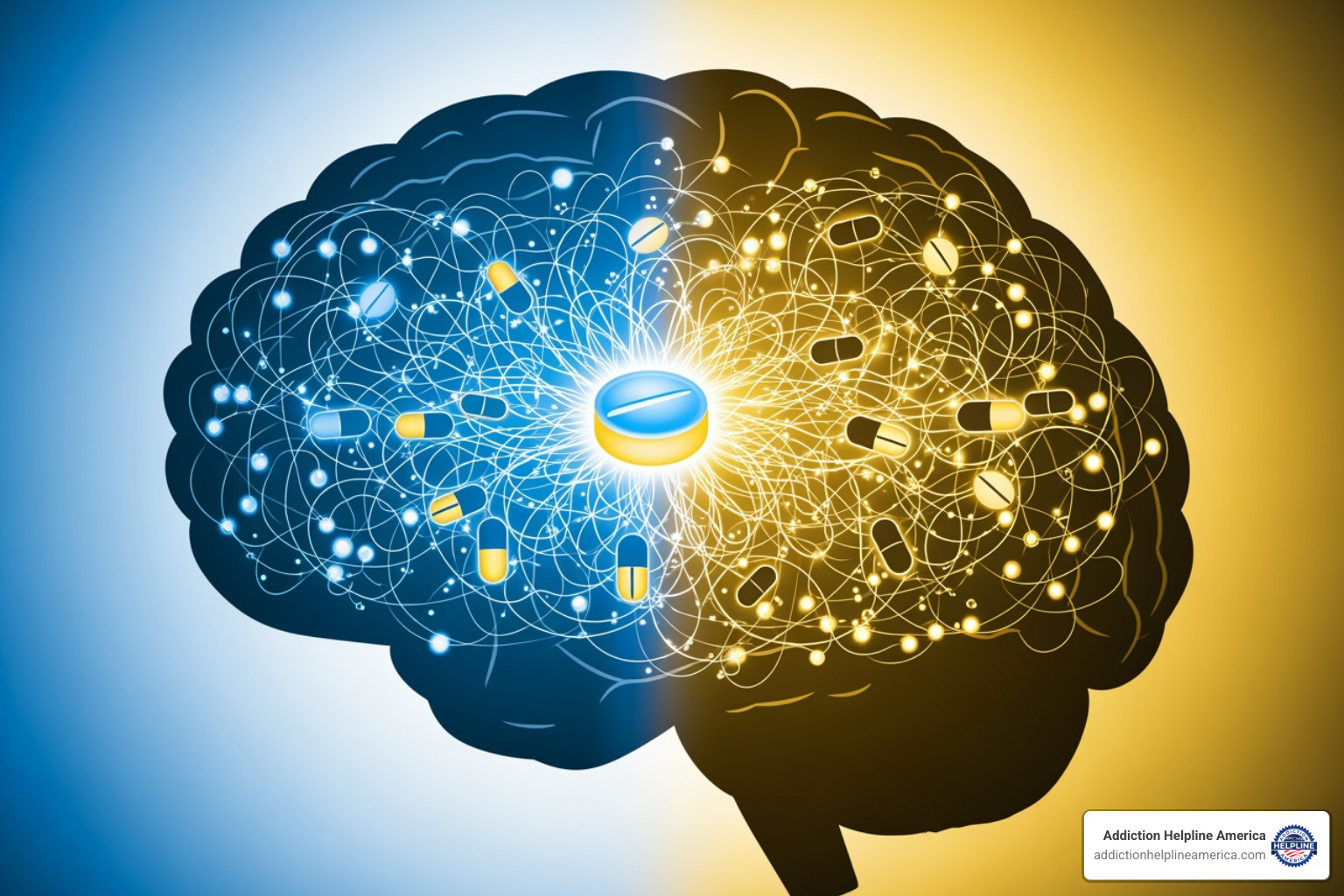
The High Risks of Antidepressant Monotherapy
The biggest red flag with bipolar disorder antidepressants appears when they’re used alone, without the safety net of a mood stabilizer. Think of it this way: if you’re trying to balance on a tightrope, antidepressants alone might push you too far in one direction. Instead of simply lifting the depression, they can catapult someone into a full-blown manic or hypomanic episode.
This dangerous phenomenon has a clinical name: Treatment-Emergent Affective Switch (TEAS). It can happen surprisingly quickly—often within just eight weeks of starting antidepressant treatment. One day you’re hoping the medication will help with your crushing depression, and within weeks you might find yourself in the grip of mania, with racing thoughts, risky behavior, and a mood that’s spinning out of control.
But the risks don’t stop there. Antidepressants used alone can also trigger or worsen something called rapid cycling—when someone experiences four or more distinct mood episodes (depression or mania/hypomania) within a single year. This pattern makes bipolar disorder even more unpredictable and harder to stabilize. It’s like adding fuel to an already volatile fire.
A comprehensive overview of antidepressant risks in bipolar disorder from 2018 confirmed these concerns, noting that antidepressants have triggered manic episodes in a meaningful percentage of people with the condition. This is precisely why general practice guidelines strongly recommend that when antidepressants are used at all for bipolar disorder, they should only be prescribed for short-term use and always in combination with a mood stabilizer or antipsychotic to help prevent these dangerous mood switches.
What Research Says About the Effectiveness of Bipolar Disorder Antidepressants
Beyond the safety concerns, there’s another uncomfortable truth: the research on whether bipolar disorder antidepressants actually work is disappointing at best. A 2018 overview article reached a sobering conclusion—there’s insufficient proof that antidepressants are an effective treatment for bipolar disorder. When you weigh the potential benefits against the very real risks, the math doesn’t always add up in their favor.
Even more striking, studies have found that antidepressants may not provide any additional benefit for bipolar depression when taken alongside a mood stabilizer like lithium or divalproex (Depakote). This finding came from the Systematic Treatment Improvement Program for Bipolar Disorder (STEP-BD) study, one of the largest and most comprehensive research efforts on bipolar treatment. Essentially, adding an antidepressant to an already stable mood stabilizer regimen might not improve depression outcomes—it might just add unnecessary risk.
The International Society for Bipolar Disorders (ISBD) conducted an exhaustive review of multiple studies examining antidepressants in bipolar disorder. Their 2013 conclusion, published in the American Journal of Psychiatry, was carefully worded but clear: they could not conclusively recommend antidepressants to treat bipolar disorder, though they acknowledged their occasional use in specific circumstances. You can read their detailed ISBD task force recommendations to understand the nuanced approach experts take.
Perhaps most concerning, multiple long-term randomized studies have shown that antidepressants don’t effectively prevent future depressive episodes in bipolar disorder. Some observational research even suggests that in about one-third of people with bipolar disorder, antidepressants appear to be associated with a long-term worsening of the illness—particularly an increase in rapid cycling. This isn’t just about whether they work today; it’s about whether they might make tomorrow harder.
Understanding SSRIs and Their Specific Risks for Bipolar Disorder
When psychiatrists do consider antidepressants for bipolar disorder, they often turn to a class called Selective Serotonin Reuptake Inhibitors (SSRIs). These medications work by increasing the availability of serotonin—a chemical messenger in the brain that helps regulate mood—by preventing it from being reabsorbed too quickly by nerve cells.
The most commonly prescribed SSRIs include fluoxetine (Prozac), sertraline (Zoloft), citalopram (Celexa), escitalopram (Lexapro), and paroxetine (Paxil). Sometimes bupropion (Wellbutrin), which works differently by affecting dopamine and norepinephrine, is also used in this context.
SSRIs are generally considered to have milder side effects than older classes of antidepressants, which is part of why they’re often the first choice when antidepressants are deemed necessary. The typical side effects can include nausea, headaches, insomnia or sleepiness, agitation, reduced sex drive (including erectile dysfunction and loss of libido), diarrhea, rash, and sometimes weight changes. For most people, these effects are manageable and often diminish over time.
But for someone with bipolar disorder, the concerns go deeper than these general side effects. The primary worry remains that SSRIs can trigger manic or hypomanic episodes, especially when used without a mood stabilizer. While research suggests SSRIs may have a slightly lower “switch rate” to mania compared to older tricyclic antidepressants, the risk is still very real and requires careful monitoring.
There’s another important safety consideration: the FDA recommends close monitoring of young people—children and adolescents—for worsening depression or suicidal thoughts when starting antidepressants. This applies to anyone with bipolar disorder as well, since mood instability can increase vulnerability during medication changes. For more comprehensive information about side effects, MedlinePlus offers helpful information on antidepressant side effects.
At Addiction Helpline America, we’ve seen how confusing and overwhelming these medication decisions can be, especially when someone is also struggling with substance use as a way to cope with untreated or poorly managed bipolar symptoms. Our team understands that finding the right treatment approach—one that addresses both mental health and any co-occurring addiction—requires personalized guidance and a comprehensive treatment program that puts safety first.
The Foundation of Bipolar Treatment: Mood Stabilizers and Antipsychotics
Given the complexities and risks associated with bipolar disorder antidepressants, you might be wondering: what is the go-to treatment? The answer lies in a different class of medications: mood stabilizers and atypical antipsychotics. These are the true foundation of bipolar disorder treatment, and understanding why requires a shift in how we think about the condition itself.
Unlike unipolar depression, where the primary goal is simply to lift someone out of a depressive state, bipolar disorder requires a more nuanced approach. The overarching goal isn’t just to treat depression—it’s to achieve mood stabilization. Think of it like this: if your moods are a ship on stormy seas, antidepressants might try to push the ship upward, but they risk capsizing it entirely. Mood stabilizers and antipsychotics, on the other hand, work to calm the waters themselves, preventing the dramatic swings in either direction.
This is why mood stabilizers and antipsychotics are considered first-line treatments for bipolar disorder. They address the core instability of the condition, reducing the frequency and severity of both manic and depressive episodes. When bipolar disorder antidepressants are used at all, they’re only considered as adjunctive therapy—meaning they’re added on top of a mood stabilizer or antipsychotic, never used alone as the primary treatment.
| Medication Type | Mechanism of Action | Primary Use in Bipolar Disorder | Key Risks |
|---|---|---|---|
| Antidepressants | Increase serotonin and other neurotransmitters | Adjunctive treatment for depressive episodes (controversial) | Can trigger mania, hypomania, or rapid cycling when used alone |
| Mood Stabilizers | Regulate neurotransmitter activity to prevent mood swings | First-line prevention of both manic and depressive episodes | Requires blood monitoring (lithium); potential side effects vary by medication |
| Antipsychotics | Block dopamine and other receptors to reduce mood elevation | First-line treatment for mania; some also treat depression | Weight gain, metabolic changes, movement disorders (varies by medication) |
The Core Role of Mood Stabilizers
When mental health professionals talk about the “gold standard” for bipolar disorder treatment, they’re usually referring to lithium. This medication has been used for decades and has the most robust evidence base of any bipolar treatment. Lithium is particularly effective at preventing manic episodes, and research shows it also reduces the risk of suicide—a critically important benefit given that bipolar disorder carries one of the highest suicide risks of any psychiatric condition.
Beyond lithium, several anticonvulsant medications originally developed to treat seizures have proven effective as mood stabilizers. These include divalproex (also known as Depakote), which is often used for acute mania and prevention of mood episodes. Lamotrigine (Lamictal) is particularly valued for its effectiveness in preventing depressive episodes, making it a go-to choice for people with bipolar II disorder who experience more depression than mania. Carbamazepine (Tegretol) is another anticonvulsant option, though it’s used less frequently due to potential drug interactions and the need for careful monitoring.
How do mood stabilizers actually work? The honest answer is that we don’t fully understand all the mechanisms, but we know they help regulate the activity of neurotransmitters and stabilize nerve cell firing in the brain. The result is a reduction in the dramatic mood swings that define bipolar disorder. They work preventatively, reducing the likelihood of future episodes when taken consistently, rather than just treating acute symptoms.
One important consideration with mood stabilizers is that they often require regular blood tests to monitor medication levels and check for potential side effects on organs like the kidneys, liver, and thyroid. While this might seem inconvenient, it’s a crucial safety measure that allows your treatment team to optimize your dose and catch any problems early. For comprehensive information on these medications, you can reference the NIMH guide to bipolar medications.
The Role of Atypical Antipsychotics
The term “antipsychotic” can sound alarming if you’re not familiar with psychiatric medications, but don’t let the name throw you off. Atypical antipsychotics (also called second-generation antipsychotics) are incredibly versatile medications that have become a cornerstone of bipolar treatment. Unlike older “typical” antipsychotics, these newer medications have a different side effect profile and are effective for treating both manic and depressive episodes.
What makes atypical antipsychotics particularly valuable is their flexibility. They can be used as monotherapy (a single medication used alone) or as adjunctive therapy (added to other medications like mood stabilizers) depending on the individual’s needs. Some atypical antipsychotics, such as quetiapine (Seroquel) and lurasidone (Latuda), have FDA approval specifically for treating bipolar depression, making them important alternatives to bipolar disorder antidepressants without the same risk of triggering mania.
One particularly interesting combination is olanzapine-fluoxetine, which pairs the antipsychotic olanzapine with the SSRI antidepressant fluoxetine in a single pill (marketed as Symbyax). This combination is FDA-approved for bipolar depression and represents one of the few scenarios where an antidepressant is built into the treatment approach—but notably, it’s always paired with a mood stabilizer component to mitigate risks.
Statistics show that approximately 50% of patients with bipolar disorder are prescribed antipsychotics as part of their treatment regimen. This high percentage reflects both the effectiveness of these medications and the reality that many people with bipolar disorder need more than one medication to achieve stability. Common atypical antipsychotics used in bipolar treatment include aripiprazole (Abilify), olanzapine (Zyprexa), quetiapine (Seroquel), risperidone (Risperdal), and lurasidone (Latuda).
Like all medications, atypical antipsychotics come with potential side effects. Weight gain and metabolic changes (including increased blood sugar and cholesterol) are common concerns with some of these medications, particularly olanzapine and quetiapine. Other possible side effects include sedation, dizziness, and movement-related issues. However, the specific side effect profile varies significantly between different medications in this class, which is why working closely with a psychiatrist to find the right fit is so important.
At Addiction Helpline America, we recognize that finding the right medication combination can feel overwhelming, especially when navigating the complexities of bipolar disorder treatment. If you or a loved one is struggling with bipolar disorder—particularly if substance use has become a way of coping with mood symptoms—we’re here to help. Our team can connect you with comprehensive mental health treatment programs that address both psychiatric medication management and any co-occurring substance use concerns in an integrated, evidence-based way.
Our helpline is 100%
free & confidential
If you or someone you care about is struggling with drug or alcohol addiction, we can help you explore your recovery options. Don’t face this challenge alone—seek support from us.
Programs
Resources
Will my insurance
cover addiction
treatment?
We're ready to help
Find the best
drug or alcohol treatment
center
Are you or a loved one struggling with addiction? Call today to speak to a treatment expert.




